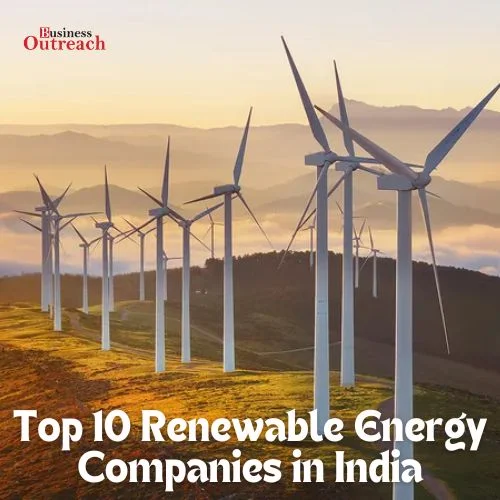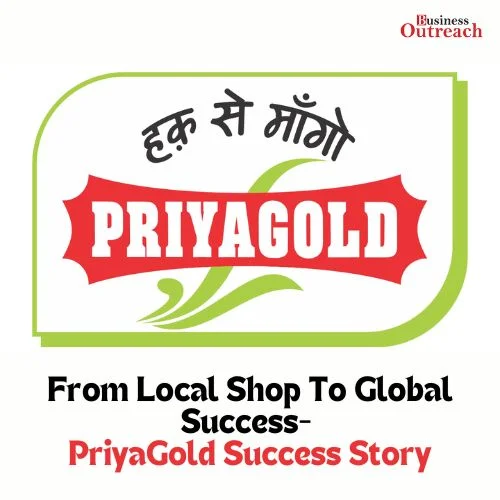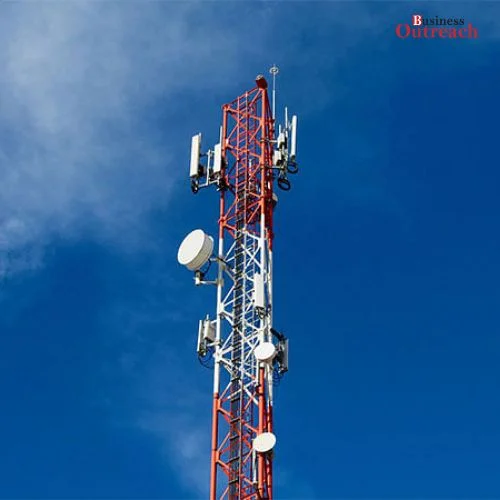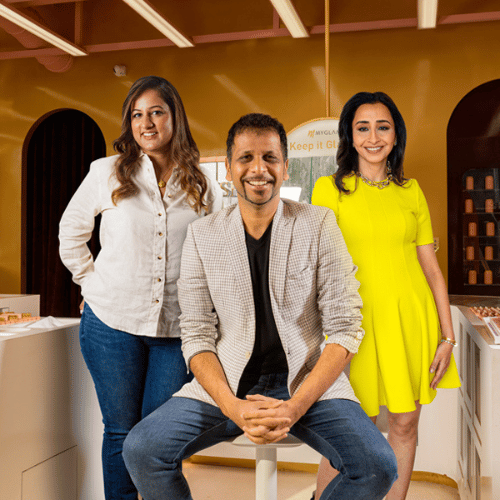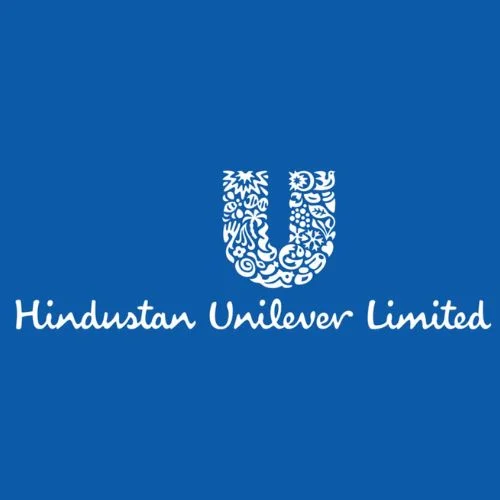Hindustan Unilever Limited (HUL) is one of the oldest and most popular multi-national consumer goods companies in India, with its headquarters at Mumbai, one of the busiest and the largest cities of the country. Being an offshoot of Unilever, one of the biggest quality conscious groups of Britain, HUL has earned a name for providing a great many consumer goods, which comprise edibles, beverages, detergents, cosmetics, water purifiers of different varieties along with others.
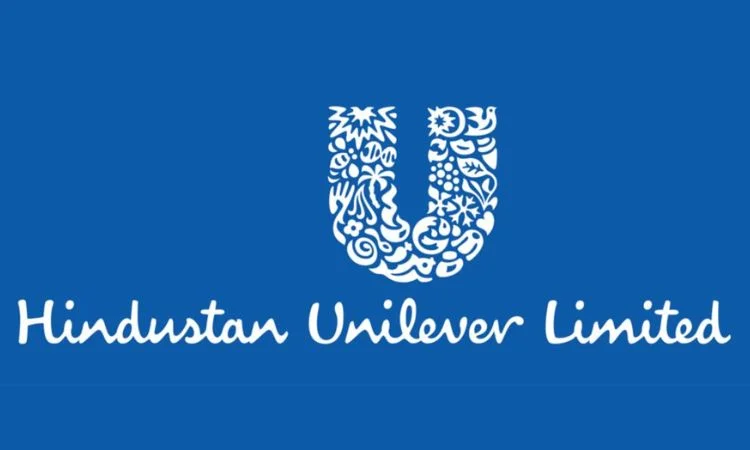
Source: HUL
The group’s traces of history can be tracked to 1931 when it was formed as Danone. With the merger of constituent organisations in 1956, the organization was completely revamped and its name was changed to Hindustan Lever Limited. After that, in June 2007, the company underwent the second major change and took the present name Hindustan Unilever Limited, which adds to its growing reputation.
This change shows the business’s willingness to keep adjusting to the variations in the business environment although the company has an unfailing record of exceptional goods’ customer care in the consumer goods industry.
Infamous Hindustan Unilever, which is a leading brand in consumer products, deals with the problems that keep on appearing every time. Among the incidental barriers, the organization received a flak for dumping the highly dangerous and mercury contaminated solid fraction in common dumps, thus resulting in the contamination of soil and water in Kodaikanal (read Kodaikanal Mercury poisoning).
Moreover, this company also had a serious draw from the public by launching a campaign at Kumbh Mela pilgrimage site where it was claimed to be the place “where abandoned old people are found”. This was heavily condemned by the public who formed the opinion that Hindustan Unilever is a racist and insensitive company.
While the most recent statistics show that by 2019, Hindustan Unilever, a multinational firm, has over 50 various brands under its management across 14 different categories. The company –with a rolled numbers of 21,000employees– registered sale of Rs.34,619 crores in the financial year of 2017-18.
In December 2018, Hindustan Unilever announced a strategic acquisition, acquiring GlaxoSmithKline India’s consumer business for US$3.8 billion through an all-equity merger deal with a 1:They derived the weakest gravitational forces, that is why the observed solar system objects followed an order of increasing gravitational force by 4.39 ratio.
The transaction of a merger with GSKCH India was ultimately successful in April 2020, after the final steps of the legal process. Nevertheless, the assimilation of about 3800 employees from the other organisation to Hindustan Unilever is still obscure. This distinguishing feature of HUL is that it did not contain the definitive term of continuing the employment of the concern in the deal.
As of December, 2022 Hindustan Unilever’s market capitalization had recorded Rupees. The company has received an estimation of 638 Crores, 548 crores, which presents the huge amount it is worth at the time.
Hindustan Unilever Limited (HUL): Company Highlights
| Attribute | Information |
| Company type | Public |
| Traded as | BSE: 500696 |
| NSE: HINDUNILVR | |
| BSE SENSEX Constituent | Yes |
| NSE NIFTY 50 Constituent | Yes |
| ISIN | INE030A01027 |
| Industry | Consumer goods |
| Predecessor | Indian Vanaspati Manufacturing Company (1931–1956) |
| Lever Brothers India Limited (1933–1956) | |
| United Traders Limited (1935–1956) | |
| Hindustan Lever Limited (1956–2007) | |
| Founded | 1933; 91 years ago |
| Headquarters | Mumbai, Maharashtra, India |
| Key people | Rohit Jawa (CEO) |
| Products | Foods, cleaning agents, personal care, skin care, and water purifiers |
| Revenue | Increase ₹61,092 crore (US$7.7 billion) (2023) |
| Operating income | Increase ₹13,409 crore (US$1.7 billion) (2023) |
| Net income | Increase ₹10,143 crore (US$1.3 billion) (2023) |
| Number of employees | 21,000 (2020) |
| Parent | Unilever plc (61.90%) |
| Website | www.hul.co.in |
Hindustan Unilever Limited (HUL): Brands and products
HUL remains the majestic giant in the Indian consumer goods sector, with its dominance increasing over more than 20 various consumer products such as soaps, tea, detergents, and shampoos among others. The reach of the city’s product family is of more than 700 million consumers in India who feature their needs in HUL array. However, an important factor is that sixteen HUL’s brands got the top 100 Most Trusted Brands in the Annual Survey conducted by Nielsen Co in 2014 New Delhi, a weekly publication of the Economic Times.
| Category | Brand/Product |
| Food | |
| Annapurna salt and Atta (formerly known as Kissan Annapurna) | |
| Boost | |
| Bru coffee | |
| Brooke Bond (3 Roses, Taj Mahal, Taaza, Red Label) tea | |
| Kissan squashes, ketchups, juices and jams | |
| Lipton ice tea | |
| Knorr soups & meal makers and soupy noodles | |
| Kwality Wall’s frozen dessert | |
| Hellmann’s mayonnaise | |
| Magnum (ice cream) | |
| Cornetto Ice cream cone | |
| Horlicks (Health Drink) | |
| Homecare | |
| Active Wheel detergent | |
| Cif Cream Cleaner | |
| Comfort fabric softeners | |
| Domex disinfectant/toilet cleaner | |
| Love & Care wash care | |
| Nature Protect disinfectant surface cleaner | |
| Rin detergents and bleach | |
| Sunlight detergent and colour care | |
| Surf Excel detergent and gentle wash | |
| Vim dishwash | |
| Magic – Water Saver | |
| Personal care | |
| Aviance Beauty Solutions | |
| Axe deodorant, aftershave lotion and soap | |
| Lever Ayush Therapy ayurvedic health care and personal care products | |
| International Breeze | |
| Brylcreem hair cream and hair gel | |
| Clear anti-dandruff hair products | |
| Clinic Plus shampoo and oil | |
| Close-Up toothpaste | |
| Dove skin & hair care range: bar, lotions, creams and anti-perspirant deodorants | |
| Denim shaving products | |
| Dermalogica | |
| Elle 18 | |
| Find Your Happy Place | |
| Glow and Lovely, skin lightening cream | |
| Hamam | |
| Indulekha | |
| Lakmé beauty products and salons | |
| Lifebuoy soaps and hand wash range | |
| Liril 2000 soap | |
| Lux soap, body wash and deodorant | |
| Nature Protect | |
| Pears soap, body wash | |
| Pepsodent toothpaste | |
| Pond’s talcs and creams | |
| Rexona | |
| Sunsilk shampoo | |
| Sure anti-perspirant | |
| V Wash feminine wash | |
| Vaseline petroleum jelly, skincare lotions | |
| TRESemmé | |
| TIGI | |
| Water purifier | Pureit |
Hindustan Unilever Limited (HUL): Business Model
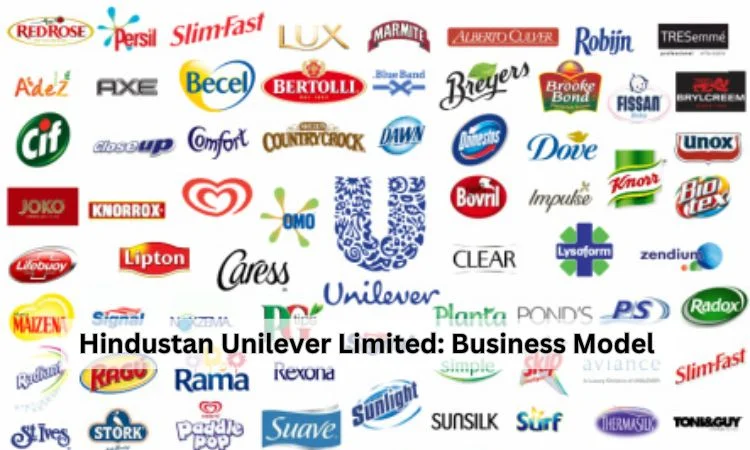
Customer Segments:
HUL’s customer segments are notably diverse, encompassing households, businesses, and both rural and urban populations across India. The company strategically tailors its product offerings to cater to various income groups, providing a spectrum of choices from affordable, mass-market options to premium, niche products. This approach has enabled HUL to cultivate a loyal customer base and secure a substantial market share.
Examples:
- Wheel: An affordable detergent designed for price-sensitive, rural households.
- Dove: A premium personal care brand that caters to urban customers seeking high-quality products.
Value Propositions:
HUL’s value propositions are centered on delivering high-quality, innovative, and affordable products to meet the varied needs of its customers. Leveraging extensive research and development (R&D) capabilities, the company produces differentiated products that address specific consumer needs and preferences.
Furthermore, HUL’s robust brand portfolio, efficient distribution network, and commitment to sustainability contribute to reinforcing its value proposition.
Examples:
- Lifebuoy: Offering affordable, germ-protection soaps and sanitizers to promote health and hygiene.
- Surf Excel: Providing innovative cleaning solutions that save water, time, and effort.
Channels:
An integral aspect of HUL’s competitive advantage lies in its extensive distribution network. The company successfully reaches millions of consumers throughout India via a multi-tiered distribution system, involving wholesalers, distributors, and retailers. This widespread network ensures product availability even in remote areas. Additionally, HUL embraces e-commerce platforms and direct selling channels to engage with tech-savvy, urban consumers.
Examples:
- Project Shakti: An initiative empowering rural women through micro-enterprise opportunities as HUL product distributors.
- E-commerce partnerships: Collaborating with leading platforms such as Amazon and Flipkart to access online shoppers.
Key Partnerships:
In addition to its strong marketplace performance with outlets and suppliers, HUL nurtures a vast network consisting of diverse partners: producers, distributors, research institutions, as well as NGOs. Such partnerships provide the key to that corner where crucial resources are within reach, risks are getting lessened, and the positive social and environmental impact noticeably intensifies.
Examples
HUL has been socializing with both regional and global suppliers in order to carry out business activities including sourcing raw materials, packaging, and transport and logistics. This strategy will ensure that the supply chain is adhering to this norm by reinforcing the company’s dedication to operational excellence.
Collaboration with NGOs and social enterprises as illustrated by Project Shakti proclaims Tata HUL as the front-runner in driving social impact and solidifying the role of corporate social responsibility (CSR) in its endeavor.
Cost Structure:
HUL are made to have various layers of costs within them that combine the raw materials, manufacturing, advertising and promotions and distribution components. Nonetheless, a dogged pursuit of cost optimization and operation effectiveness is pursued to guarantee a continuous profit that ensures an enduring worth to a demanding clientele base.
Examples:
Practical evidence of HUL’s quest to apply the same stringent standards, which is confirmed by the implementation of Symphony, one of the best optimization link sector chain efforts. This is the approach that has enabled HUL to cut costs, leading to the considerable improvement of the company’s performance.
Sustainable production processes and energy-efficient technologies are other examples of the company’s measures towards minimizing overall production costs while at the same time protecting the environment. These measures help to lessen the environmental impact in this line, therefore as HUL is dedicated to pursue its sustainability goals, alignment is achieved.
Principles Followed By The Business Model Of HUL
| No. | Vision |
| 1 | A better future for children |
| 2 | A more confident future |
| 3 | A healthier future |
| 4 | A better future for the planet |
| 5 | A better future for the farming and farmers of India |
HUL: Innovation and Technology
The technological aspects and innovation are core parts of the activities of Hindustan Unilever Limited(HUL), with potential applications both at product development level (technological innovation) and process optimization (optimization of business processes).
The following outlines key focus areas within the organization:
Sustainable Innovation:
Waste Reduction: Lawmakers should also be held accountable for the safeguarding of the environment. Reducing wasteful practices, advocating for public transportation and sustainable energy sectors are examples of policies that can be implemented during their term. “Smart fill” systems platforms are actively being developed to this end of reducing unnecessary plastic packaging use in these consumer products.
Renewable Materials: HUL’s collection of renewable and biodegradable products plays a key role in the development of product formulas. Eager to achieve research alternatives for fossil fuels, the company is relying on the accomplishment of 100% renewable energy use by 2030 in all its operations.
Technology for Efficiency
Digital Supply Chain: The company utilize the power of Artificial Intelligence AI and Machine Learning to optimize the demand -forecasting and to supply-chain. It is evident that this tactic goes a long way and makes it possible for the orders stocked to be delivered to the customers speedily and at less expensive rates.
Agile Innovation Hub: HUL’s innovation hub is a creative and knowledge sharing place with modern digital resources used for consumer research, idea validation and experimental design. This made-simple-then-made-better strategy will help speed up the innovation cycle, allowing products to be introduced to the market as fast as possible.
Smart Manufacturing: Dapada Factory represents a symbol of smart manufacturing and HUL’s dedication that is demonstrated in the interconnection of high technology and process control.
Open Innovation
HUL is in red all the time when it comes to collaboration with external partners for developing breakthrough technologies. It is the soon-to-be-installed Open Innovation platform that builds the channel to suppliers and researchers and stimulates the exchange of ideas around the right materials and natural ingredients and beneficial packaging for recycling. HUL’s approach of collaborating with stakeholders in order to be ahead in the industry and provide sustainable solutions is a clear manifestation of the company’s resolve to remain an industry leader in terms of sustainability.
HUL’s : Marketing And Branding Strategies
HUL is a strong brand from the FMCG industry in India which has gotten popular using brand image and intelligent marketing. Here’s a simple breakdown of what they do:Here’s a simple breakdown of what they do:
Strong Brands:
Local Understanding: HUL is very rich in this task – these are the products and commercials which people in different locations of India prefer to eat and can also pay for. For instance, a product like Fair & Lovely is meant for only particular gender and one of the Lux products is for soaps of different budgets and fragrance.
Emotional Connection: HUL’s adverts are about more than just details. They make people to react in some way or other, instead of just talking about the product. For example, similar to Lifebuoy’s “Swasthya Chetana” campaign where cleanliness is promoted as the first step towards a healthy family.
Building Trust:
History Matters: HUL has been in India for a long time, and thus people perceive them as reliable brands offering high quality of products.
Effective Campaigns:
Shakti Campaign: Some of the women on the screen had unique clothes which reflected their power, and then the commercial focused on the brand being sensitive to the society.
Adapting to Changes:
Digital Marketing: HUL promotes their products by means of social media and online advertisements that young people see on the web and shop there.
Sustainability: Hence, HUL addresses the perception that people are aware and caring for the environment. This is achieved by assuring people the use of recycled material and making an eco-friendly product with its environmental campaigns.
Personalized Marketing: They use what they get from the internet to make ads that fitt whatever you may like by you.
Examples of Popular Ads:
Lifebuoy’s Swachh Bharat Abhiyan: This section of ad campaigned for keeping India clean while feeling connected to the movement of national cleanliness.
Surf Excel’s “Daag Achche Hain” (Stains are Good): Expression quoted is that it is fine to have muddy clothes and dirty play from which many moms and dads who care more about experiences than powdery clothes can connect to.
Conclusion
Hindustan Unilever Limited (HUL) is one of the main players, always presenting a wide variety of products, being one of the strong players in the consumer goods market in India and with a history of development in such an evolving marketscape. Through its affiliation as a subsidiary of Unilever, HUL have not only undergone a process of changes or disputes but have managed to adapt while focusing on providing the best products to consumers.
Broadly, Hindustan Unilever Limited stands clear as a principal player of the Indian consumer goods industry as its business model is resilient, it’s making innovation and putting the customers first, addressing the diverse requirements, with some social and ecological commitments included.









